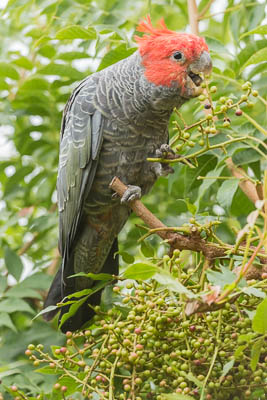It's also very useful to note what the birds in this and other reports are eating.
Chinese Pistachio* has recently been added to the ACT's Pest Plants list, joining Hawthorns, Cotoneasters, Privets, Firethorn as berry-producing, introduced species whose seeds end up in nature parks and reserves. There they compete with native plants for space, soil nutrients and rainfall.
These environmental weeds are target species for the Australian Native Plants Society's WEED SWAP on the weekend of 29th & 30th March. ANPS members offer FREE young native plants in exchange for the berried-plants and Periwinkle, Ivy, Broom at Corkhill Bros landscaping yard near the Mugga Lane tip and Canberra Sand & Gravel's yard at the western end of Southern Cross Drive, Macgregor.
* Chinese Pistachio has separate male and female trees with the latter producing the berries. Both trees are popular garden subjects as their leaves' autumn colours appeal to many. The down-side is that their berries (and those of the other named species) are taken into bushland where biodiversity is adversely affected. These species and other weeds, of course, have few controlling predators outside their countries-of-origin.
Rosemary
Begin forwarded message:
---------- Forwarded message ----------
From:
Ann Eldridge <
Date: 15 March 2014 12:40
Subject: Gang-gangs
To:
A pair feeding in a friend's Chinese Pistachio tree in Pearce this morning, ate for a good half an hour!
Ann
 *******************************************************************************************************
*******************************************************************************************************

